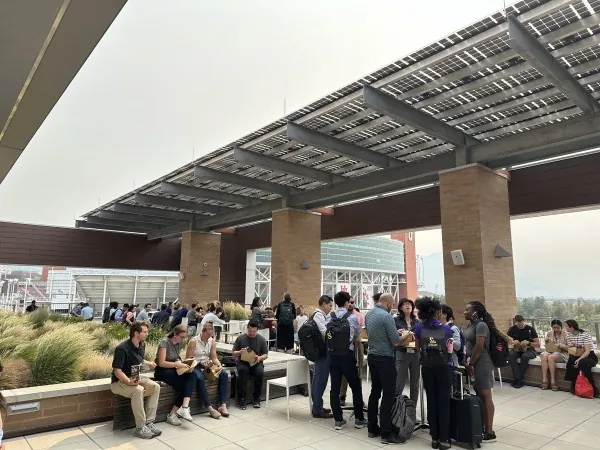
Biden's Disturbing Absence at ASEAN Summit: A Recipe for Strategic Miscalculation in Southeast Asia?
2024-10-09
Author: Yu
SINGAPORE – As the ASEAN-US Summit and the East Asia Summit get set to kick off in Vientiane, Laos on October 11, the glaring absence of United States President Joe Biden raises eyebrows once again.
For the second year running, Biden has chosen to send a representative instead of attending himself, this time opting for Secretary of State Antony Blinken over Vice President Kamala Harris who represented the US last year.
Many speculate that Biden’s absence can be attributed to the upcoming presidential election on November 5, but the implications of this decision go much deeper, hinting at a concerning trend in US foreign policy towards Southeast Asia and the Association of Southeast Asian Nations (ASEAN).
While President Biden aims to fortify relationships with Germany and Angola, his absence from ASEAN-related gatherings sends unsettling signals regarding Washington's commitment to Southeast Asia. Analysts worry that this disengagement may ultimately bolster China's expanding influence in the region, which has been gaining traction in recent years.
A Diminishing Role for ASEAN?
Despite Southeast Asia being frequently touted as a critical player in the US Indo-Pacific strategy, actions speak louder than words. The US has recently prioritized security-oriented alliances, as seen in Biden's hosting of the Quad Leaders’ Summit in Delaware. These exclusive groupings, which include Australia, Japan, and India, eclipse more inclusive engagements such as ASEAN, raising questions about the US's genuine interest in broader multilateral cooperation.
Amid issues such as China's assertiveness and North Korea's threats, ASEAN countries are left feeling sidelined as the US continues to favor bilateral ties and smaller groups over engaging with ASEAN, despite its rhetoric claiming to uphold ASEAN centrality.
Concerns linger about the US's commitment to ASEAN, even as reports indicate that Southeast Asians perceive partnerships like the Quad positively. There remains a pervasive fear that these smaller alliances could undermine ASEAN's foundational role.
China Fills the Leadership Void
Where the US's absence and economic retreat might create a vacuum in Southeast Asia, China quickly steps in to fill it. The US's sporadic engagements, exemplified by a lack of traction for the Indo-Pacific Economic Framework for Prosperity (IPEF), contrast sharply with China's consistent and aggressive diplomatic strategy.
China has positioned itself not just as ASEAN's top trading partner but also as a key ally through initiatives like the Belt and Road Initiative (BRI). Projects such as the Laos-China railway highlight China's growing economic influence and appeal as a partner in regional development, as reported in the latest State of Southeast Asia 2024 survey.
For the first time, Southeast Asians have indicated a preference for alignment with China over the US, marking a seismic shift in regional sentiment. Furthermore, China has maintained its position as the most influential power in Southeast Asia for six consecutive years, even as concerns linger over its growing dominance.
Struggling US Engagement and Declining Influence
Responses to the State of Southeast Asia surveys demonstrate a significant decline in perception regarding US engagement. Many Southeast Asians now express skepticism about the US's role as a strategic partner, attributing their disillusionment to the US's inward political focus on domestic issues like inflation, healthcare, and immigration.
Moreover, the ongoing Israel-Hamas conflict has tarnished perceptions of US leadership in the region, opening doors for other middle powers such as Australia, Japan, and the European Union, keen to solidify their presence.
For the US to reclaim trust in Southeast Asia, it is crucial to recalibrate its foreign policy approach and demonstrate unwavering support for ASEAN. The question lingers: could ASEAN foreign ministers favorably attend a US summit in place of their leaders? In diplomacy, perception and presence matter immensely.
The implications of these diplomatic choices could reshuffle the balance of power in Southeast Asia and determine the region's future trajectory—one that may not necessarily align with American interests if current trends continue.
As the geopolitical landscape evolves, will the US grasp the urgency of reevaluating its strategies in the Indo-Pacific, or will Southeast Asia continue to drift under the shadow of Chinese influence? Only time will tell.



 Brasil (PT)
Brasil (PT)
 Canada (EN)
Canada (EN)
 Chile (ES)
Chile (ES)
 España (ES)
España (ES)
 France (FR)
France (FR)
 Hong Kong (EN)
Hong Kong (EN)
 Italia (IT)
Italia (IT)
 日本 (JA)
日本 (JA)
 Magyarország (HU)
Magyarország (HU)
 Norge (NO)
Norge (NO)
 Polska (PL)
Polska (PL)
 Schweiz (DE)
Schweiz (DE)
 Singapore (EN)
Singapore (EN)
 Sverige (SV)
Sverige (SV)
 Suomi (FI)
Suomi (FI)
 Türkiye (TR)
Türkiye (TR)